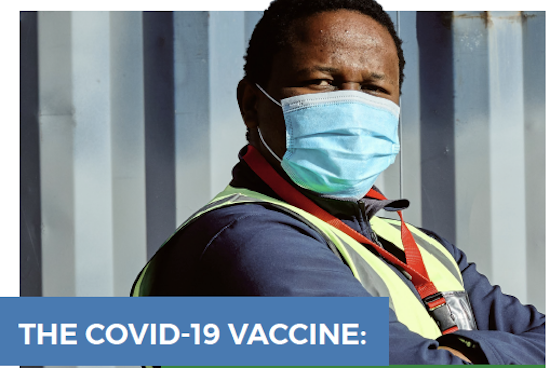A new "advisory" workplace safety guidance from the Occupational Safety and Health Administration is largely consistent with the COVID-19 protocols the construction industry has long had in place, safety specialists reviewing the document released Jan. 29 say.
The advisory outlines recommended precautions and policies to protect workers from exposure to COVID-19. The document applies to construction and all other industries except health care and emergency response. It is not a regulation or mandatory safety standard—something that organized labor has been seeking for months.
Rather, the OSHA guidance states that its recommendations “are advisory in nature, informational in content and are intended to assist employers in providing a safe and healthful workplace.”
OSHA's formal safety standards are mandatory and enforceable.
Biden safety directive
The OSHA action is a response to President Joe Biden’s Jan. 21 executive order on worker health and safety, which directed the agency to issue “revised guidance to employers on workplace safety during the COVID-19 pandemic,” within two weeks.
More actions may be coming: Biden’s executive order also directs OSHA to “consider” whether any emergency temporary workplace standards for the coronavirus are needed.
Biden’s directive asks for a response from OSHA regarding such standards by March 15.
Brian Turmail, an Associated General Contractors of America spokesman, said via email: “Our initial read is that the new guidance is consistent with many of the safety practices firms have already been using to successfully protect workers and local communities from the spread of the coronavirus.”
Turmail adds that the association will be checking with AGC member firms’ safety specialists to do a more detailed evaluation of the guidance “to confirm that it will, in fact, be effective in protecting workers.”
Greg Sizemore, Associated Builders and Contractors' vice president of health, safety, environment and workforce development, said via email that the group "is currently reviewing the new OSHA guidance from the lens of the construction industry."
Sizemore notes that OSHA has classified construction as low hazard regarding the pandemic and that the Dept. of Homeland Security has deemed the industry "essential critical infrastructure" since the pandemic began.
Industry Coalition 2020 Plan
Sizemore adds that ABC "has taken countless actions to protect our member [firms'] employees because safety is a foundational pillar of who we are and what we have accomplished in our 70-year history."
Sizemore also points to a COVID-19 response plan that the Construction Industry Safety Coalition issued in March 2020. He says the plan "provides a comprehensive approach for minimizing the risk of exposure to COVID-19 in the construction work environment."
The plan, he says, covers such topics as protective personal equipment, use of face coverings and how to respond to workers who test positive for the virus or show symptoms of the disease. ABC, AGC and 28 other construction business groups are members of the coalition.
Do's and Don'ts
The new OSHA guidance covers several main topics, with many specific “do and don’t” recommendations under each of them. The topics include conducting a hazard assessment and identifying controls to limit the virus spread.
In addition, OSHA’s guidance calls for adopting policies dealing with employee absences to encourage workers who may be infected to stay home. OSHA notes that those policies should not be ones that “punish workers.”
OSHA also recommends putting in place safeguards from retaliation for workers who “raise coronavirus-related concerns.”
Other recommendations include communicating the COVID-19 protection policies to workers who speak English and those who do not.
OSHA did issue updated construction industry-specific COVID-19 safety guidance in May 2020.




Post a comment to this article
Report Abusive Comment